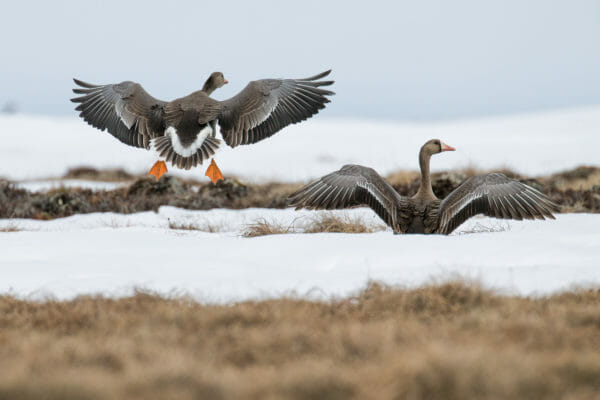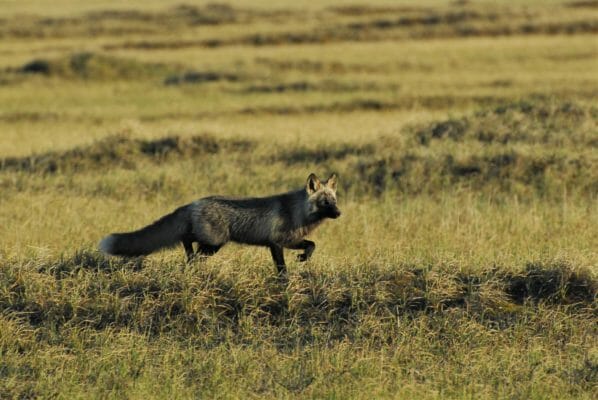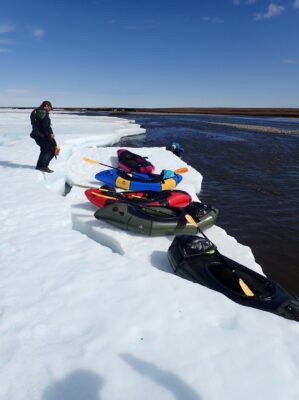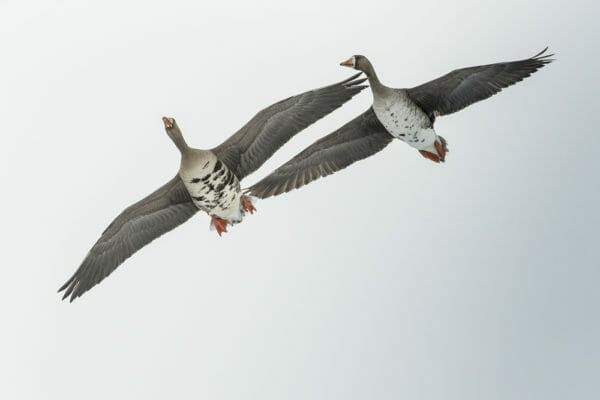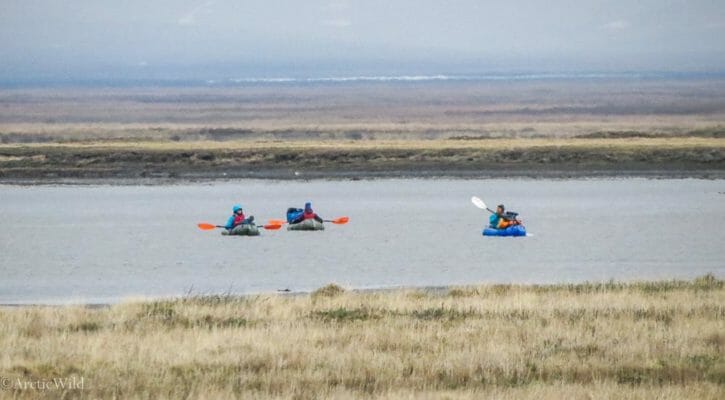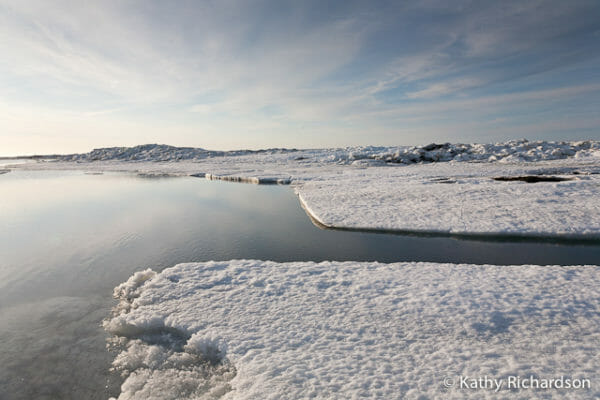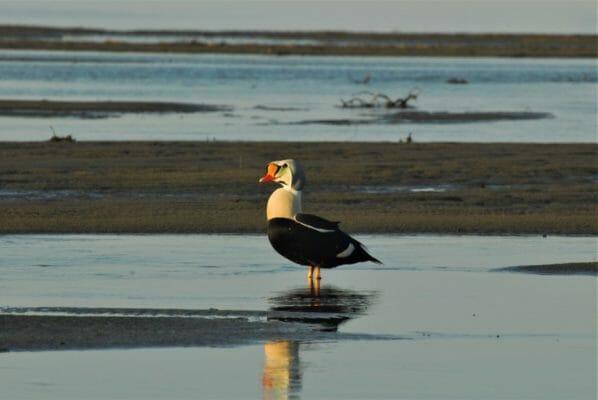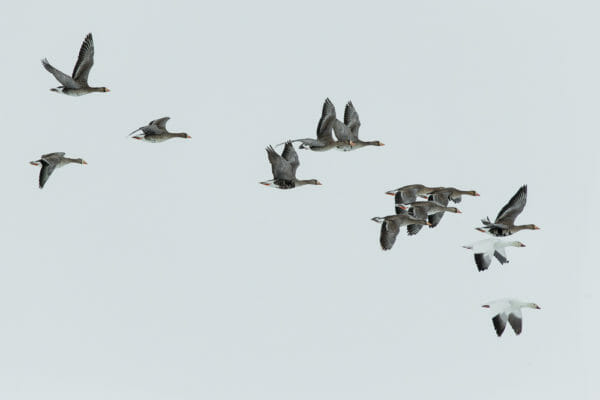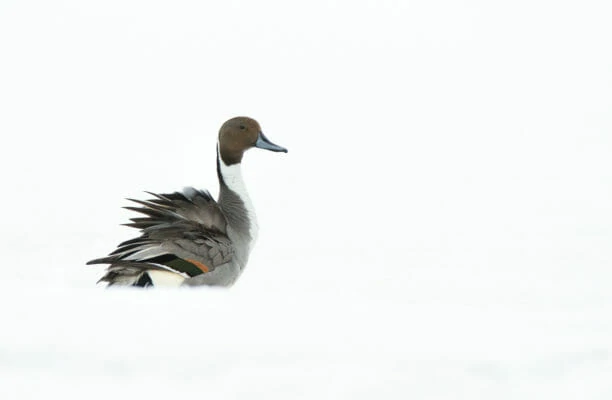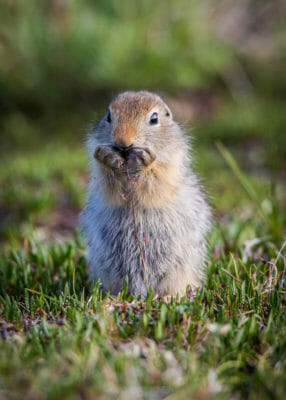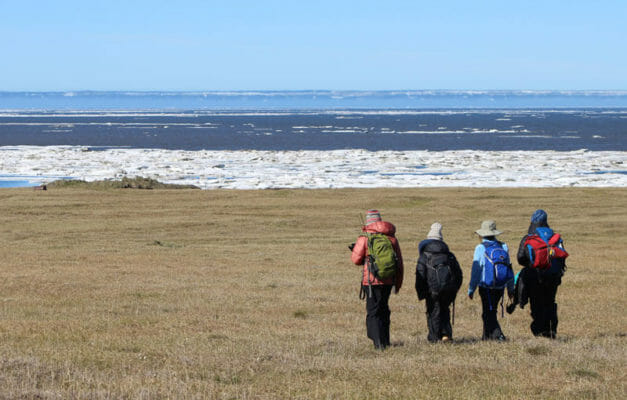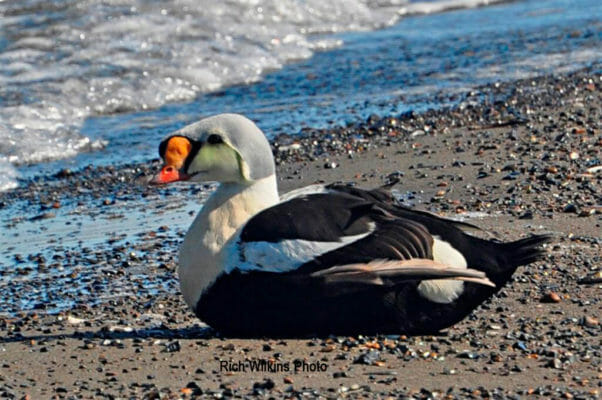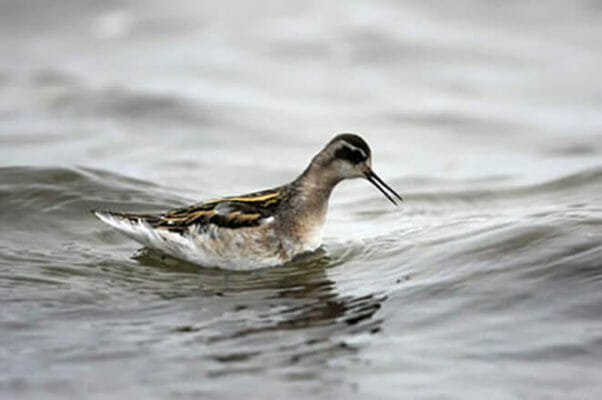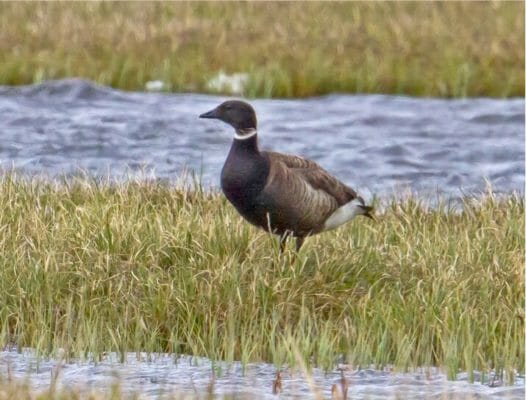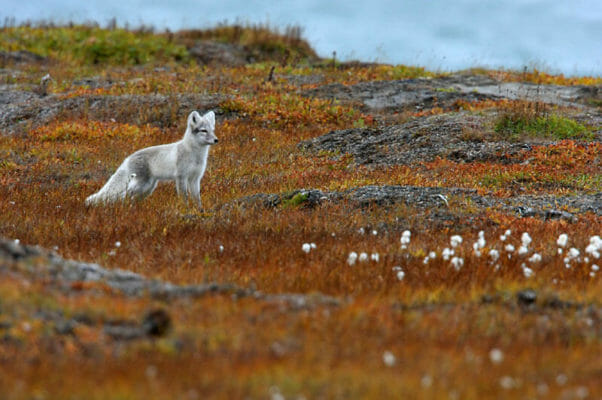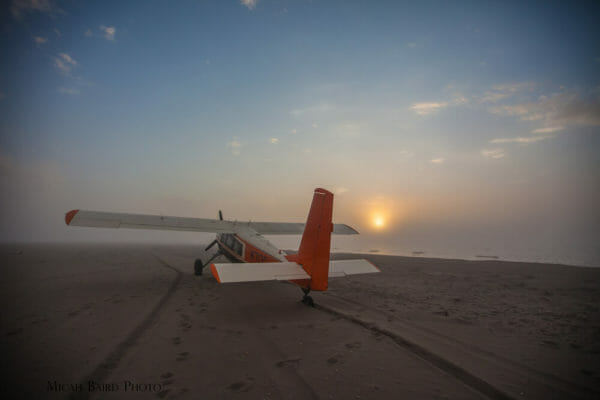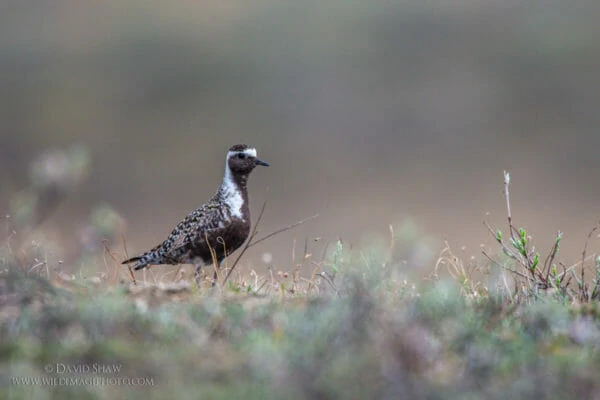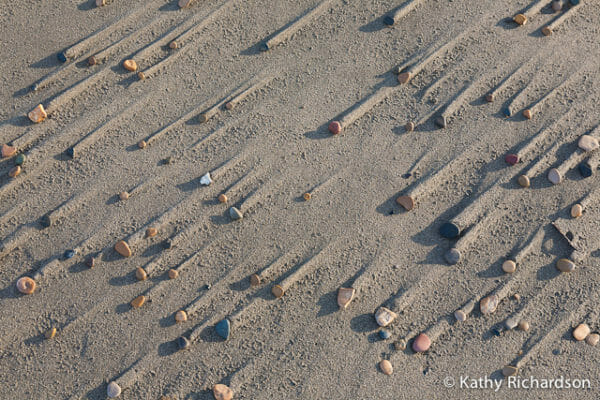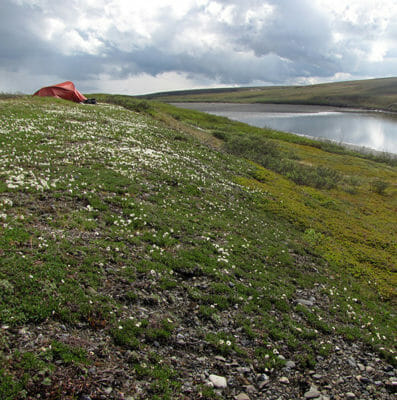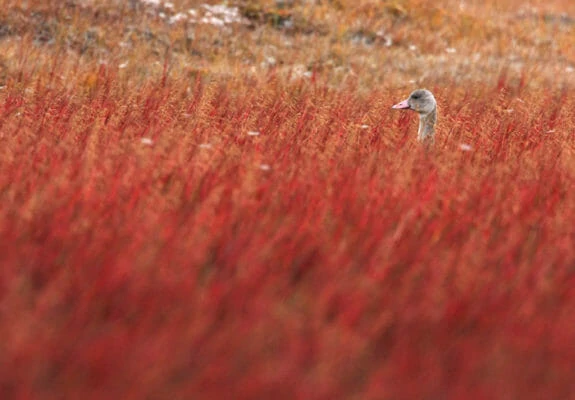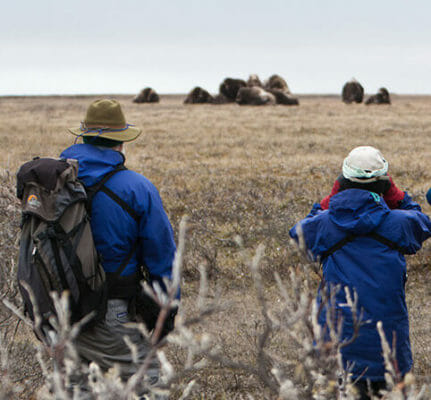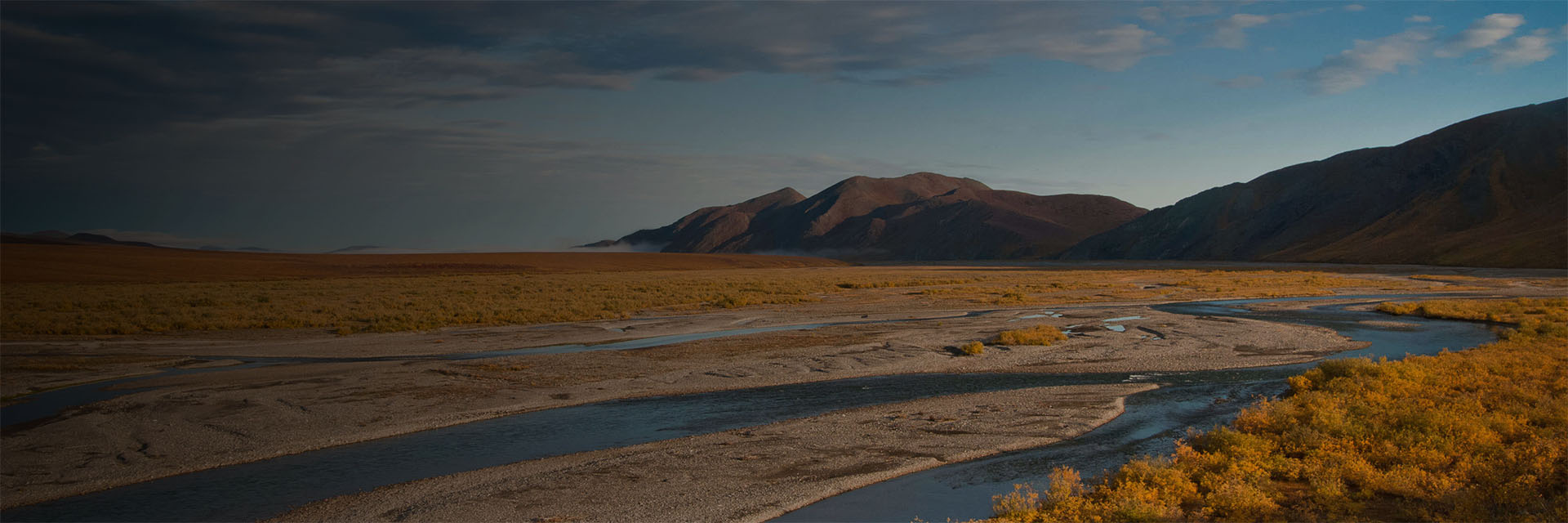Last updated: May 21, 2025
Itinerary
What follows is a general flow of events. Expect the unexpected and prepare to be flexible.
June 25
Meet your guide at Arctic Wild headquarters at 4 pm for a pre-trip meeting where we can check gear and help you get ready for our departure the following morning.
June 26
Fly north from Fairbanks across the Yukon River over the Brooks Range and into the Arctic Slope. Pik Dunes is visible from a long way off as a bright speck in an ocean of green tundra and lakes. We land right on the sand and after we bid our pilot farewell we are swallowed by the silence.
June 27
We have a full day to explore Pik Dunes and the surrounding wetlands. Walking is excellent in the sand and the diversity of habitats makes for an interesting day of walking, birding, fishing or whatever delights you the most.
June 28
With endless daylight we are never in a hurry, but we do have some miles to cover, so today we shoulder packs and hike out of the sand and onto the tundra. It is less than a mile to the first lake and here we inflate our packrafts, stow our packs and paddle north. A mile of paddling brings us to another much smaller portage before we begin the traverse of a long shallow lake where we will likely camp for the night in the company of birds.
June 29
More lake paddling and our longest portage of a mile and a half brings us down the bluffs to the shore of the Kealok.
This clear water creek winds northward to Teshekpuk allowing us to travel this wildlife rich area with relative ease, stopping to watch wildlife and exploring the tundra beyond.
June 29 - June 30
We have 3 days to paddle the nearly 30 miles of the creek. If the water is up and the wind is down it will be a lazy float with binoculars in hand.
More likely, with only two feet of drop per mile the current will be insufficient to counter the wind and we will paddle our way north searching for the deeper parts of the creek and hugging the bluffs to duck out of the frequent northeasterly winds.
Regardless of how easy or hard the miles are to cover, we have lots of time to explore the area and to consider it’s wildlife and flora. At 70° degrees north and with no mountains to the north the sun will shine brightly through the night. Birdlife reaches a peak in the long shadows of the midnight sun.
July 1
Teshekpuk at last! We will likely hear the lake before we see it, the rhythm of waves on gravel and the cries of gulls and geese carried across the tundra by the wind. At its mouth the Kealok spreads into multiple channels and forms a broad sandy delta, an ideal location for an improvised airstrip and our rendezvous with our pilot a few days hence.
July 2
We have a full layover day here at the edge of Teshekpuk, a lake so large we can’t see the far side. There are some higher bluffs within walking distance of our camp, a beach which arcs to the horizon, gnarled driftwood from who knows where, and a dizzying abundance of birds.
After having spent the past few days paddling we will likely want to stretch our legs and hike, but if conditions permit it will be fun to paddle out into the lake to bob amongst the waterfowl and contemplate the enormity of the lake.
July 3
After a week in eternal daylight, sleep schedules tend to shift towards nocturnal. Fortunately the pilot isn’t schedule to arrive until around noon, when the fog is more likely to have dissipated.
We then reluctantly load our packs into the plane and return to a world, first of mountains, trees and eventually to a world of roads, buildings and showers.
We hope to arrive back in Fairbanks about 6 pm, but the weather sets the schedule.






